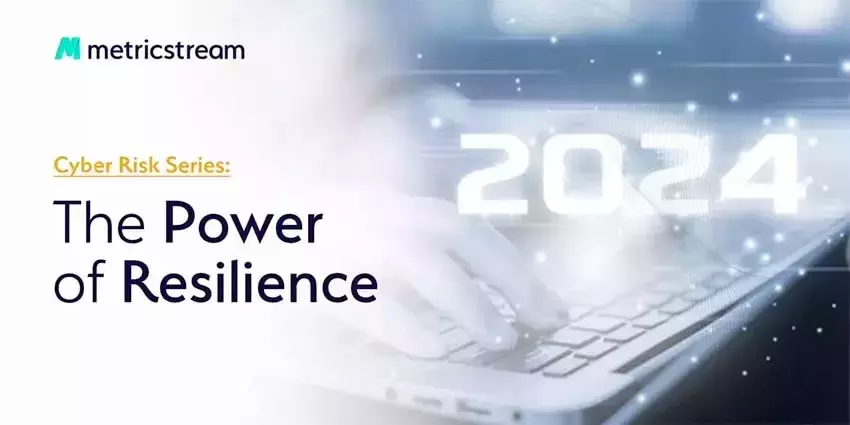Navigating 2024: Top Cyber Risk Trends That Must Be on Your Radar
- IT Risk & Cyber Risk
- 06 December 23

Introduction
It has become trite to say that cyber risks are evolving at a fast pace or that it has become a top area of concern for organizations. Businesses today are required to navigate not just the digital era but the era of cognitive intelligence and generative AI (GenAI). While these technological advancements are helping organizations significantly improve their cyber risk management and gain process efficiencies, the easy access to these tools has made them a favorite among bad actors and cyber adversaries who can use them as easily to plan and launch sophisticated attacks with far-reaching consequences.
The best cyber risk management strategy is to ensure that innovation and security measures go hand in hand. But in practice, it is not so. In an IBM survey, while 94% of CEOs said that it is important to secure AI solutions before their implementation, 69% said that innovation takes precedence over cybersecurity for GenAI.
While AI is on everyone’s mind as we step into 2024, what are the other cyber risks that organizations need to prepare for? Before we get to that, here’s a quick recap of the major happenings from 2023 for all things cyber.
The Cyber Governance, Risk, and Compliance (Cyber GRC) Whirlwind in 2023
One of the most important cyber developments in 2023 was undoubtedly the adoption of the Cybersecurity Risk Management, Strategy, Governance, and Incident Disclosure Rules for public companies by the U.S. Securities and Exchange Commission (SEC). Though there are a lot of unanswered questions and “grey” areas regarding determining the “materiality” of a cyber incident or terms like “without unreasonable delay”, it is a landmark regulation nevertheless and a step in the right direction.
For deeper insights into the new rules, you can read my previous blog “Achieve Compliance with SEC’s New Cybersecurity Rules” or leave a comment below to let us know your thoughts.
With AI implementation gathering steam across sectors, the National Institute of Standards and Technology (NIST) released the AI Risk Management Framework in January 2023. The framework is intended to “improve the ability to incorporate trustworthiness considerations into the design, development, use, and evaluation of AI products, services, and systems.”
We also saw the Digital Operational Resilience Act (DORA) being enacted in the European Union on 16 January 2023. EU-based financial sector organizations will be required to demonstrate DORA compliance from 17 January 2025. Aimed at enhancing the digital operational resilience of financial sector entities, DORA covers key areas including ICT risk management, ICT-related incident management and reporting, digital operational resilience testing, the management of ICT third-party risk, and cyber threat information sharing.
Our eBook “Demystifying DORA: Understanding and Preparing for the EU’s Digital Operational Resilience Act” discusses various aspects and requirements of DORA in detail.
Throughout the year organizations around the world also faced a growing number of cyber attacks and data breaches. Some of the major ones include the hack of MOVEit which affected over 1000 organizations and the personal data of at least 60 million individuals, the distributed denial of service (DDoS) attacks on a number of banks across Italy, ransomware attack on entertainment company MGM Resorts which led to operational disruptions, uncovering of a 38 terabyte data leak at Microsoft that happened in 2020, data breach at the Indian Council of Medical Research (ICMR) which exposed the personal data of 815 million Indian residents, and many more.
What to Expect in 2024?
It goes without saying that the cyber risks will increase in number, sophistication, and severity. Here are some of the top Cyber GRC trends for 2024:
- Heightened Business and Regulatory Focus on AI
The overall trend of AI and GenAI innovation is expected to continue and gain more momentum in 2024 with competition becoming fiercer and regulators worldwide rolling out AI-focused regulations and frameworks in an attempt to ensure that innovation is supported by effective security and governance measures. - Automated and Continuous Approach to Cyber GRC
Specifically in the field of Cyber GRC, more and more organizations are expected to embrace automation for risk and compliance management processes and AI-powered predictive analytics to navigate the rapidly intensifying cyber risk and regulatory landscape. This includes capabilities to perform autonomous risk assessments and value-based quantification, continuous control testing with immediate remediations, automated compliance, and more. - Continued Focus on Third-Party Cyber Risks
Third-party cyber risk management will also be a core focus area of CISOs and security teams with growing digital dependencies of organizations on SaaS solution providers, cloud service providers, and technology providers, among other third parties in the ecosystem. 2023 saw continued trend of exploiting third parties to gain access to target organizations. Proactively identifying the potentially vulnerable areas, points of failure, and blind spots throughout the third-party risk management life cycle has become more important than ever as can also be evidenced by the introduction of strict regulations to govern their activities. - Increased Cybersecurity Investments
Given the growing frequency, scale, and sophistication of cyber attacks, organizations will be significantly ramping up their cybersecurity and risk management investments. Gartner estimates global spending on security and risk management to reach $215 billion in 2024, making it a 14.3% increase from 2023.
With this background and while the future can be uncertain, we’ve compiled our thoughts on the top 7 cyber risk trends that organizations need to be aware of and prepare for in 2024. Check out our infographic on the top 7 cyber risk trends, which discusses these trends, what to expect, and how to prepare in more detail.
Download now: Top Cyber Risk Trends in 2024 and Beyond
Getting the Cyber Defenses Up
We at MetricStream are hard at work to help organizations stay one step ahead of cyber risks. 2023, in particular, has been a milestone year as we rolled out a number of solutions and capabilities to help organizations drive an effective Cyber GRC strategy. These include:
- AiSPIRE, the industry’s first AI-powered, knowledge-centric GRC, which continuously senses and identifies risk, audit, and control deficiencies, duplicate risks and controls, patterns of over and under-testing of controls, and enables proactive planning and prioritization of risk assessments, control testing, issue, and action planning.
- Autonomous Control Testing which automates control testing across IT compliance controls and reduces risk by assessing controls across the entire population.
- Integration with AWS Audit Manager which simplifies and consolidates IT compliance management through automated control testing and evidence collection of all firm-wide controls, including on-premises and multi-cloud environments.
To explore MetricStream’s cyber risk and IT compliance management capabilities and to prepare for the trends of 2024, request a personalized CyberGRC demo today!









